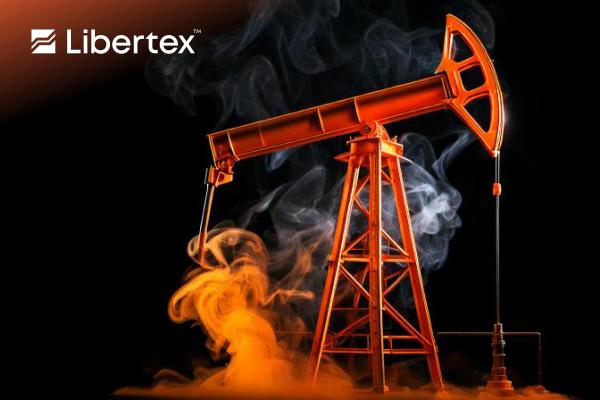There are some instruments that tend to fly under the radar for the most part unnoticed. Investors and traders are often too closely focused on stocks, currencies, or increasingly crypto to spare a thought for mundane commodities. Until they start to explode in price, that is, but by then it is typically too late to benefit. And that’s exactly what happened back in the summer of 2022 with natural gas. Amid geopolitical uncertainty in Europe, the Dutch TTF Natural Gas Futures chart gained close to 1,000% compared to its December 2020 level to hit a heady height of EUR 290.05 per MWh in late August of 2022. Then, as US LPG was targeted to make up the supply shortfall, the Henry Hub recorded a maximum of $8.81 soon afterward. But once the initial panic subsided, gas prices dwindled back to pre-pandemic prices in the space of just six months.
But now it seems as if we could be on the verge of a fresh bull cycle as prices have risen by over 50% in the last half of the year alone and are showing little sign of slowing. Savvy investors have already noticed the developing trend and are hoping that this could be the start of something big – and they might just be right. To see how, let’s take a look at the key factors that will determine natural gas’s trajectory over the rest of the year and beyond and see how they’re likely to impact prices in the near-to-medium term.
Growing demand
As with any commodity, the balance between supply of gas and demand for it will always be a major driver of prices. The latest estimates from the IEA’s annual Global Gas Security Review see global natural gas demand up by more than 2.5% in 2024, with similar growth expected in 2025. While greener solutions are being touted in Europe and the US, industrial demand for natural gas is still massive on the old continent. Fast-growing economies in Asia still account for the lion’s share of the projected demand growth as competition for seaborne gas hots up between Western and Eastern powers.
Many of the reserves that were built up in 2022 and early 2023 are gradually being depleted, raising the need for increased supply. According to IEA Director of Energy Markets and Security Keisuke Sadamori, “the growth we’re seeing in global gas demand this year and next reflects the gradual recovery from a global energy crisis that hit markets hard”. When prices hit those huge highs in 2022, gas became inviable for many businesses and production went down as a result. Now that the price point is more reasonable at $2.51 (10/10), it is natural for us to see demand pick up. Over time, however, this will clearly lead to higher prices if supply can’t keep up.
Rising tensions
Now, one of the biggest potential threats to supply right now is the worsening geopolitical situation. The market is already well aware of the risks associated with the transit of supplies through Ukraine coming to an end when the existing contract comes to an end in late 2024. If it comes to pass, this would necessitate higher LNG imports to Europe in 2025 and thus a tighter global gas balance. However, it’s also important to note that the escalation in conflict in the Middle East could further frustrate natural gas supply for a number of reasons. Apart from the immediate threat of air strikes on facilities and installations, there is also a very strong likelihood that LNG tankers will be unable to pass safely through the Red Sea and Straits of Hormuz.
Now, the longstanding difficulties both at these bottlenecks and in the Panama Canal have had a restrained effect on prices so far, but this could change significantly in case of severe escalation, especially amid growing demand. The situation may become less precarious in H2 2025 when LNG supply growth is set to rise by as much as 6% as a number of LNG projects come online, but the risk remains until then. The IEA Task Force on Gas and Clean Fuels Market Monitoring and Supply and Security continues to try and support supply with advocacy for voluntary reserve mechanisms and the implementation of a data sharing platform for member states, but it’s too early to tell whether these will be able to overcome a potential black swan event.
Trade gas and more CFDs with Libertex
Libertex offers CFDs on a wide range of underlying assets including Henry Hub natural gas futures CFDs – as well as a vast array of related stocks including Exxon Mobil and Total. For more information or to create your own account today, visit www.libertex.com/signup


